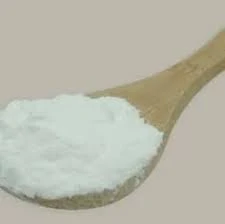The Role of Talc Additives in Plastic Enhancements
Talc, a naturally occurring mineral composed mainly of magnesium, silicon, and oxygen, has emerged as a significant additive in the plastic industry. Known for its unique properties, talc plays a crucial role in enhancing the performance, processing, and applications of various plastic products. This article explores the benefits and applications of talc as an additive in plastics.
One of the primary advantages of incorporating talc into plastic formulations is its ability to improve mechanical properties. Talc enhances the stiffness and rigidity of plastics, making them more suitable for applications that require durability and strength. This is particularly beneficial in the manufacturing of automotive parts, appliance housings, and consumer goods, where structural integrity is paramount.
The Role of Talc Additives in Plastic Enhancements
Furthermore, talc contributes to the reduction of warpage in molded plastic parts. By enhancing dimensional stability, it aids in achieving uniform thickness and shape retention. This is particularly useful in items like containers and intricate molded components, where precision is critical.
talc additive plastic

From a processing standpoint, talc can serve as a lubricant, promoting smoother processing of thermoplastics. This property helps in reducing friction during the manufacturing process, which can lead to improved flow characteristics during molding. Consequently, this can result in faster production cycles and lower energy consumption—an attractive proposition for manufacturers seeking to optimize their operations.
In addition to its mechanical and thermal benefits, talc also plays a role in the aesthetic properties of plastics. It can improve the surface finish and provide a silk-like texture, making products visually appealing. Colors and effects can be enhanced through the use of talc in various polymer systems, allowing for greater design flexibility in packaging, electronics, and other consumer products.
The environmental aspect of using talc as an additive is gaining attention as well. Talc is a naturally occurring mineral, and its use can contribute to more sustainable plastic formulations. As the industry increasingly focuses on biodegradable and environmentally friendly materials, incorporating natural additives like talc may help meet these demands while providing superior performance.
In summary, the addition of talc to plastic formulations offers a myriad of benefits, ranging from enhanced mechanical strength and thermal stability to improved processing efficiency and aesthetic appeal. As manufacturers continue to innovate and seek ways to improve plastic materials, talc will undoubtedly remain a valuable additive. With its versatile properties, talc not only supports the performance requirements of modern plastics but also aligns with the industry's growing emphasis on sustainability and environmental consciousness. This mineral will continue to play a pivotal role in shaping the future of plastic applications across various sectors.

